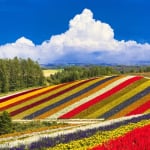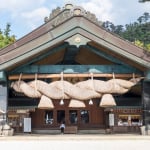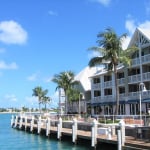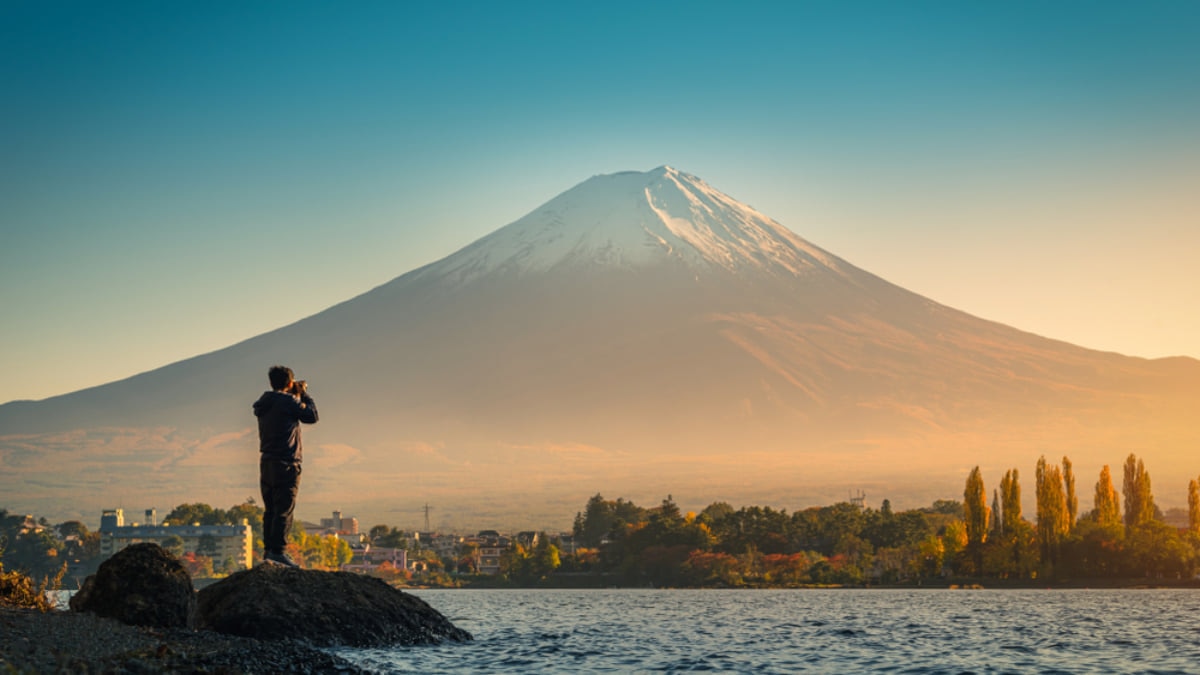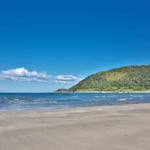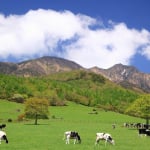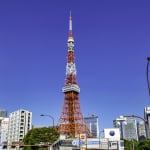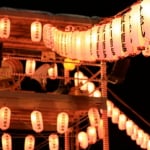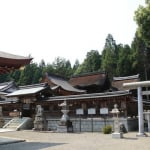Photo by Nuttawut Uttamaharad/Shutterstock
The Top Things to Do at Kawaguchiko, Gateway to the Fuji Five Lakes
Lake Kawaguchi is one of the Fuji Five Lakes and is located directly north of Mount Fuji, the tallest and most revered mountain in all of Japan. The Fuji Five Lakes region is famous for its scenic views of the sacred mountain, and Lake Kawaguchi, or Kawaguchiko, is no exception. From an amusement park with impressive views of Mount Fuji from every roller coaster to the picturesque scenery via ropeway, cruise or boardwalk, Kawaguchiko is one of the premier spots for 'Fuji-viewing'. Discover the natural beauty of the lake and ancient power that dwells within the mountain at Kawaguchiko.
table of contents
[x] close
The Top Things to Do at Kawaguchiko, Gateway to the Fuji Five Lakes
Southeast Side
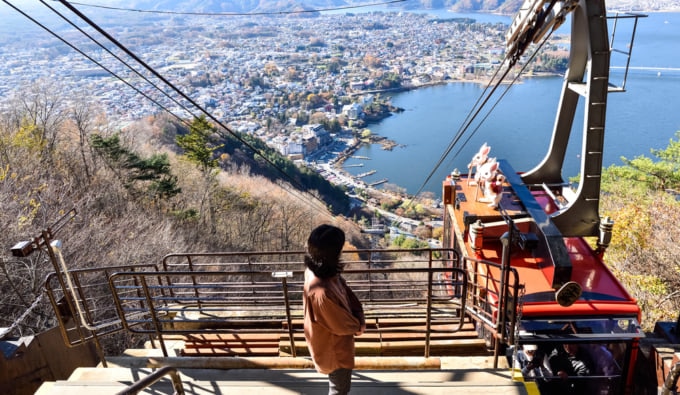
Photo by satit/Shutterstock
Lake Kawaguchi's southeast side is where the busy Kawaguchiko Station is located, and is the first stop for many people headed to the Fuji Five Lakes area. In the immediate vicinity of the station, there are multiple facilities the average tourist may find useful, including car and bicycle rentals, storage lockers and souvenir shops. Kawaguchiko itself is located just north of the station, along with the Mount Fuji Panoramic Cable Car, a ropeway up nearby Mount Kachikachi which offers dramatic views of the lake and Mount Fuji. Near the boarding point for the cable car, boat cruises around Kawaguchiko and paddle boat rentals are also available.
Northeast Side
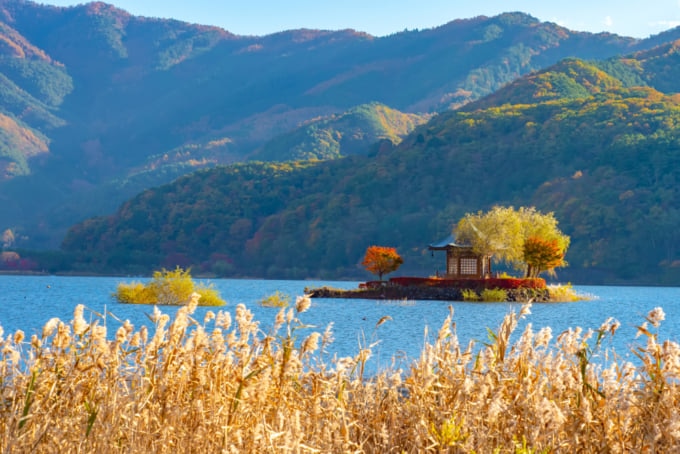
Photo by Fotogrin/Shutterstock
The Kawaguchiko Red Sightseeing Bus stops at the Kawaguchiko Natural Living Center, a gift shop which specializes in local lavender and blueberry products, and Hanaterrace, a collection of cafes and local boutiques. Both are located along the lakeside in Oishi Park, a scenic area known for its lavender fields in summer. Oishi Park also has a short waterfront promenade, including a few particularly famous photo spots offering optimal views of Mount Fuji and which are marked with wrought iron 'selfie stands' for anyone to use.
Between the Kawaguchiko Museum Park and Oishi Park, multiple museums dedicated to local artists, history and culture can be found. Closest to Oishi Park, the Itchiku Kubota Museum is dedicated to the eponymous artist. Born in 1913, Itchiku Kubota threw himself into reviving a particularly elaborate and labor-intensive silk-dyeing process used during the Muromachi Period (1333-1573). At the other end, the Kawaguchiko Museum specializes in artwork featuring Mount Fuji, and also contains a pleasant park and tea lounge where visitors can admire the venerated mountain over the lake.
Fuji Q Highland
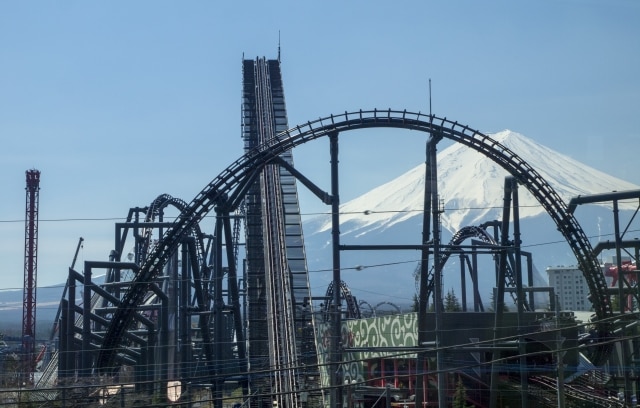
Photo by publicdomainphotography/Flickr
Fuji Q Highland is a theme park and resort hotel which bills itself as 'the closest theme park to Mount Fuji'. The park is famous for its many roller coasters, some of which are listed in the Guinness Book of World Records. Attractions and shows based on popular animated characters like Naruto and Thomas the Tank Engine are also popular. Although Fuji Q has been open for over fifty years, the park is constantly opening up new attractions and remains one of Japan's most-visited amusement parks. Due to its widespread popularity getting to Fuji Q Highland is easy. Virtually all highway buses heading to Kawaguchiko stop at the famed amusement park as well as many local buses and the Fujikyu Railway Line (which goes between Kawaguchi and Otsuki Stations).
Kitaguchi-hongu Fuji Sengen and Suwa Shrine
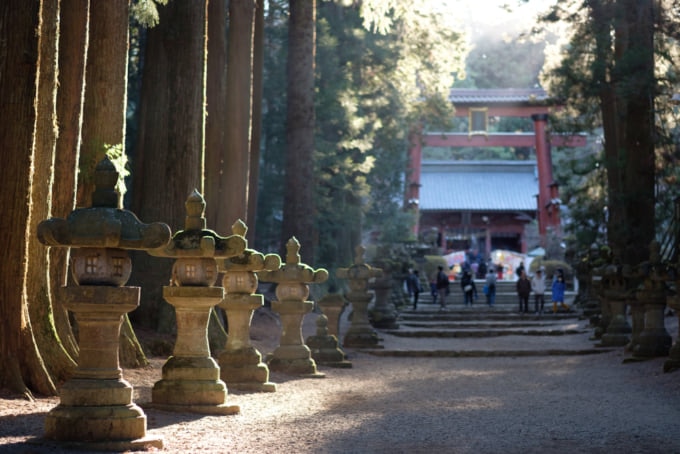
Photo by Benoist/Shutterstock
Kitaguchi-hongu Fuji Sengen Shrine is dedicated to Mount Fuji and the mountain's premier deity, the spirit of Princess Konohanasakuya, or simply 'Sakuya-hime' for short. During the Edo Period, the long journey to the summit of Mount Fuji started here, and the shrine is still a special place for many who attempt to climb to the summit. While the Fuji Sengen Shrine is now the premier Shinto shrine in the region, it was once neighboring Suwa Shrine which held the title. Suwa Shrine's main hall or honden is one of the only structures on the premises dating back to Japan's feudal era. To get to the shrines, take the number 6 local bus from Kawaguchiko Station to the Kitaguchi-hongu Fuji Sengen Shrine bus stop.
Historic Village Oshino-mura (Oshino Hakkai)
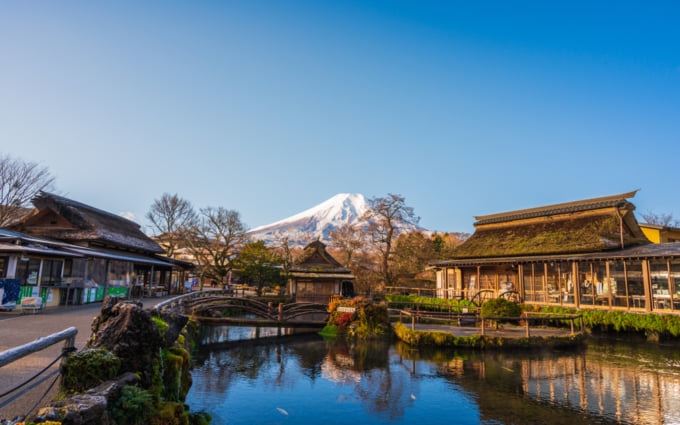
Photo by Praew Stock/Shutterstock
Oshino-mura is a village in Yamanashi Prefecture, located in the foothills of Mount Fuji and noted for its charming historic townscape and heritage buildings. The region is also famous for its clear mountain springs, a group of ponds called the Oshino Hakkai, which are included in the UNESCO World Heritage List as part of the Fujisan Cultural Site. People have lived in Oshino-mura since the Jomon Period (around 1000 BCE), and the village is a wealth of historic shrines, temples and monuments. Oshino-mura is also great for outdoor activities like fishing and hiking, and is a popular spot to view Mount Fuji over the thatched roofs of the village. The Oshino Hakkai are approximately 25 minutes away on the local number 6 bus from Kawaguchiko Station.
In Conclusion
One of the largest of the Fuji Five Lakes, Lake Kawaguchi is the most popular in part thanks to its location in the Fuji-Izu-Hakone National Park. The lake's low elevation also allows easier access by road, and Kawaguchiko's tourism industry is now also the most well-developed. During the Edo Period, Kawaguchiko was once the only foothold on the way up Mount Fuji, a sanctioned path for determined pilgrims located south of the lake. The area continues to serve as a place of importance for those on the way to the summit.
If you're looking for some beautiful resorts with views of the mountain, check out this article Luxury Resorts and Hotels with Views of Mount Fuji to Stay at Near Tokyo.
